
NUCAPS Sounding Availability, 1745 and 1927 UTC on 17 June 2021. Note the overlapping coverage in eastern Iowa (Click to enlarge)
A favorable orbit geometry on NOAA-20 on 17 June 2021 meant that portions of the upper Midwest received NUCAPS soundings 90 minutes apart. This is an ideal way to monitor destabilization on a day when SPC has predicted an enhanced risk of severe weather, as shown below and at this link.
Compare the sounding at 42º N, 92º W from ~1800 UTC to the one from ~1930 UTC, below. Destabilization is apparent; the later profile has a lower LCL and lower LFC, and moisture has increased.
This surface plot from 2000 UTC suggests that the NUCAPS profile at ~1930 UTC has a boundary layer that is too cool and too dry. When the sounding values are edited — the lowest 3 layers were warmed and moistened — to better match the plotted observations, the sounding CAPE increased, and the LCL/LFC dropped even farther.

Original and modified NUCAPS profile at 42.14ºº N, 91.54 W, ~1930 UTC on 17 June 2021 (Click to enlarge)
The convection developed rapidly. The every-90-minutes toggle below (GOES-16 Visible Imagery at 2000, 2130, 2300 UTC) shows that, and the Day Cloud Phase Distinction RGB at the bottom (from 1901-2356 UTC) does too.
A low-level water vapor (GOES-16 Band 10, 7.3 µm) infrared imagery animation, below, from CSPP Geosphere (here is a link that will show the animation in CSPP GeoSphere until about the end of June), shows evidence of a northwestward-propagating gravity wave that might have initiated convection. This feature first interacts with convection over far southeastern Iowa, and then with a southwest-to-northeast line of convection that developed.
View only this post Read Less




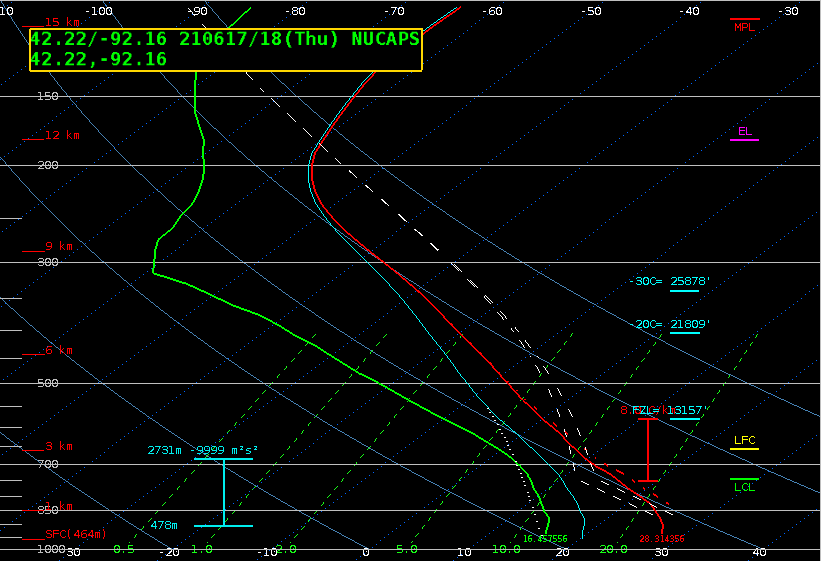
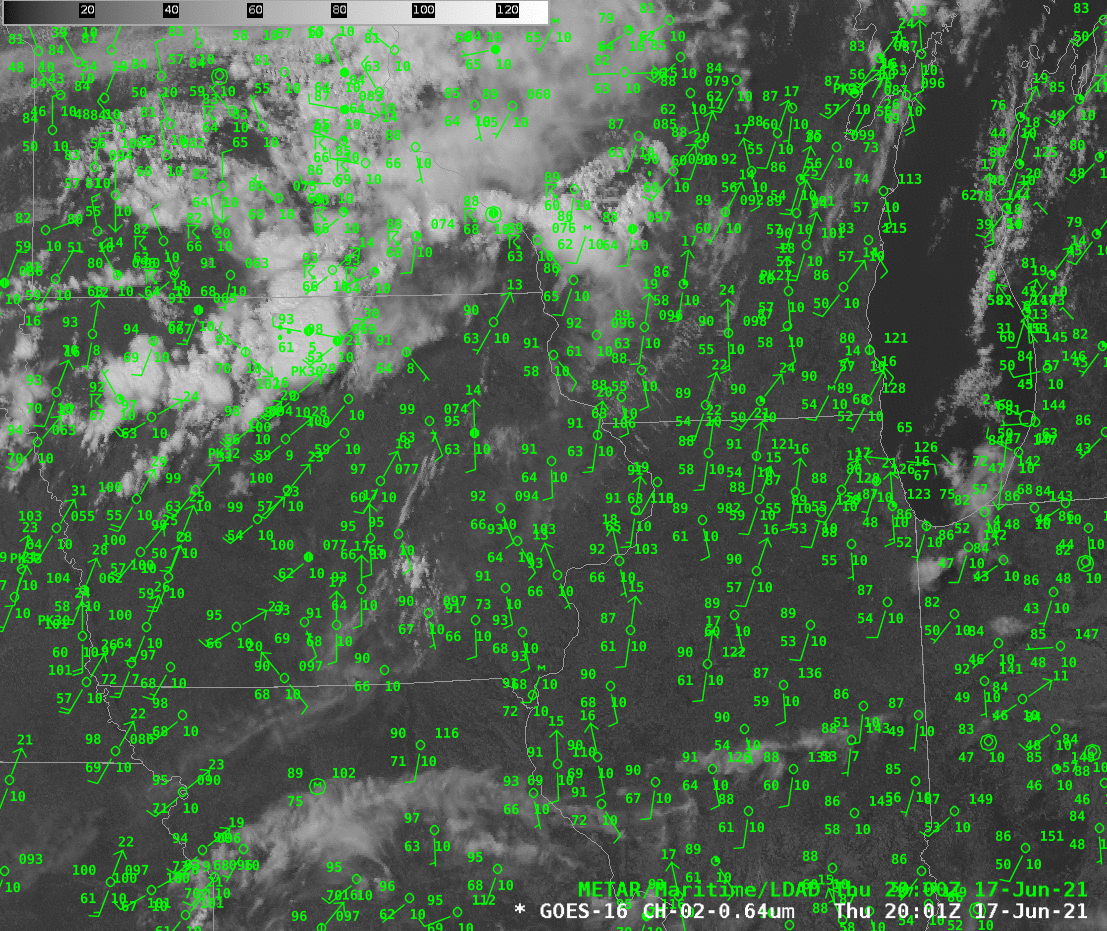
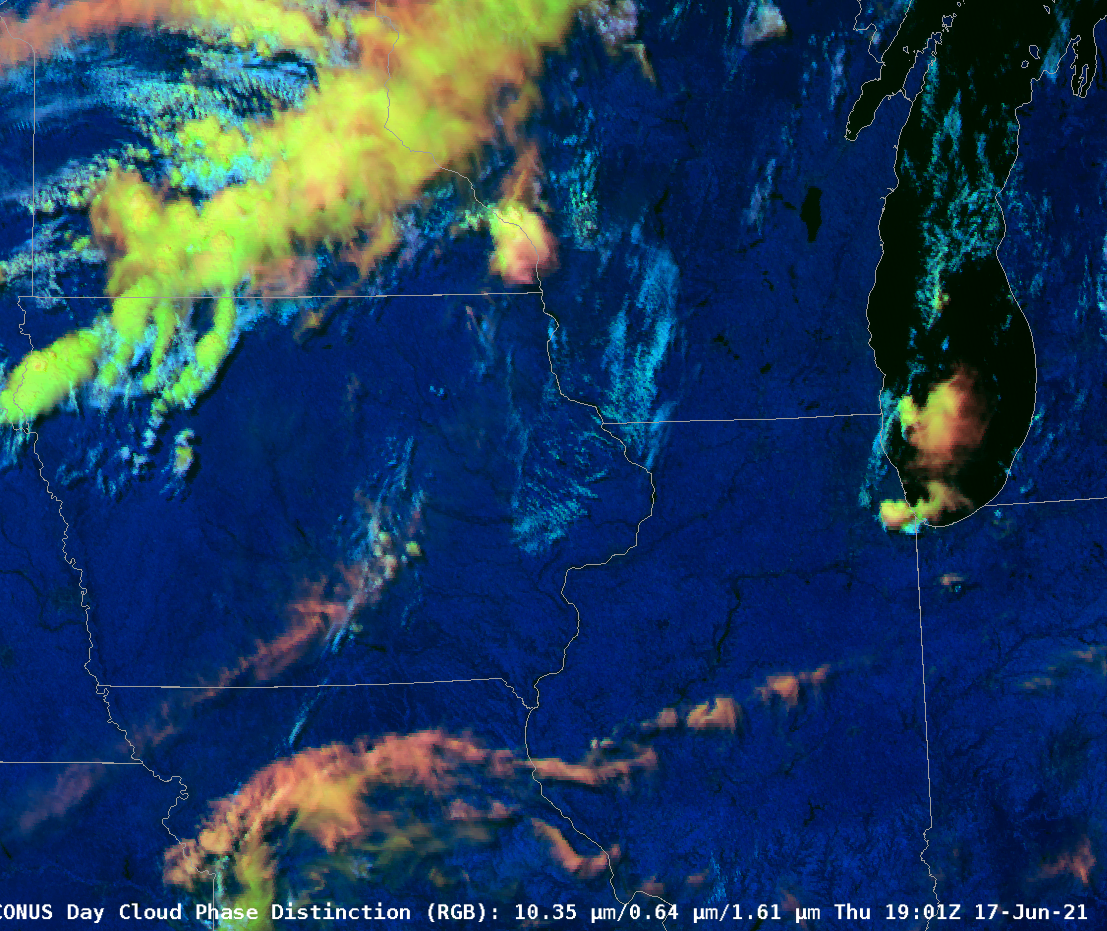
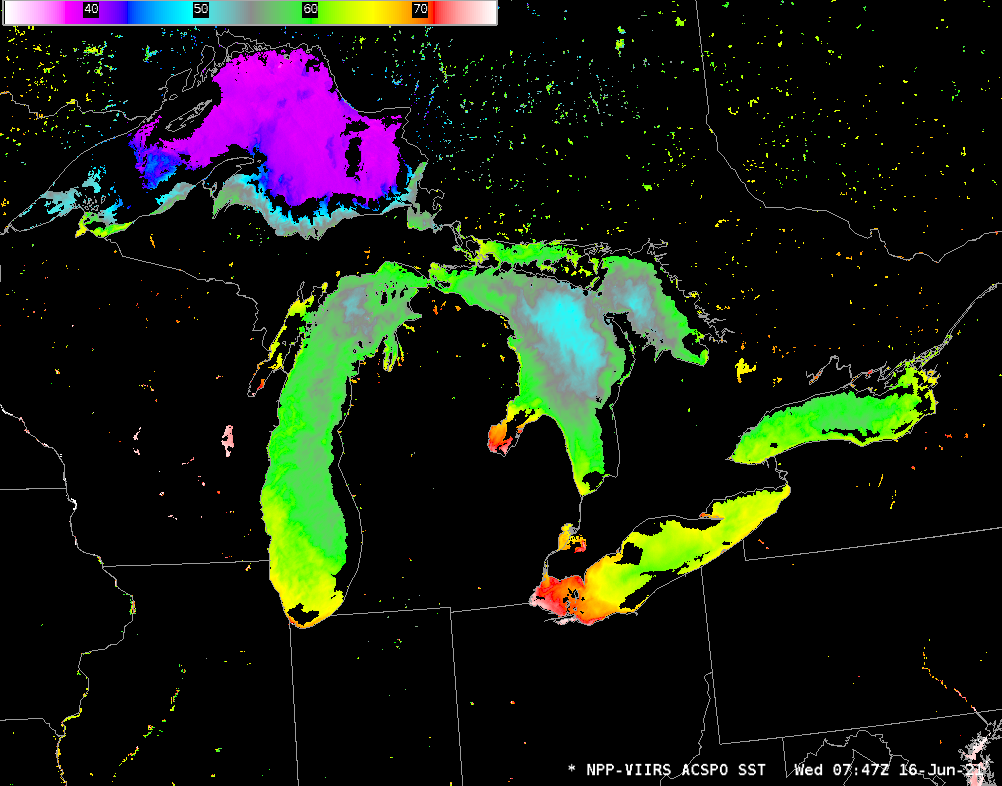
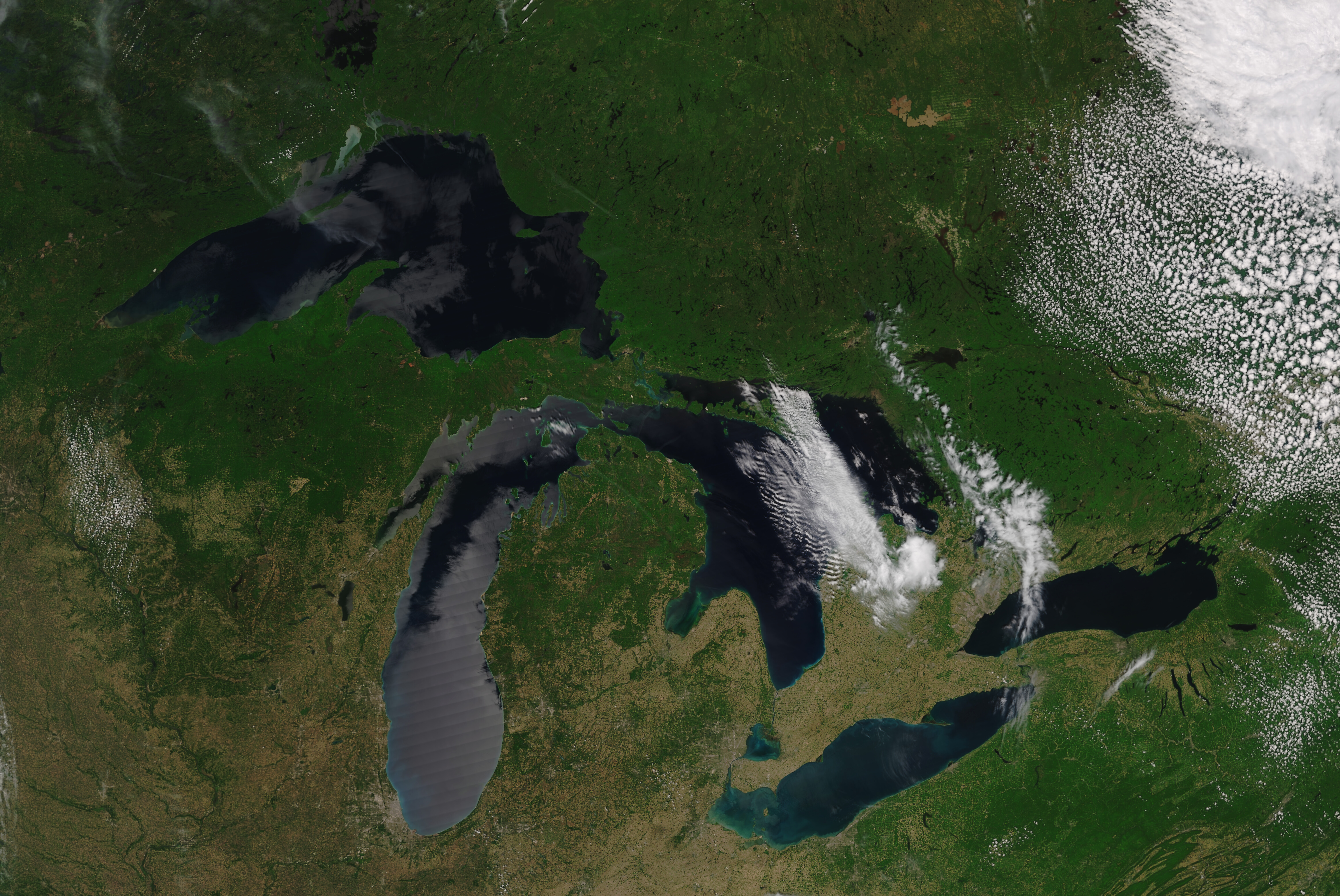
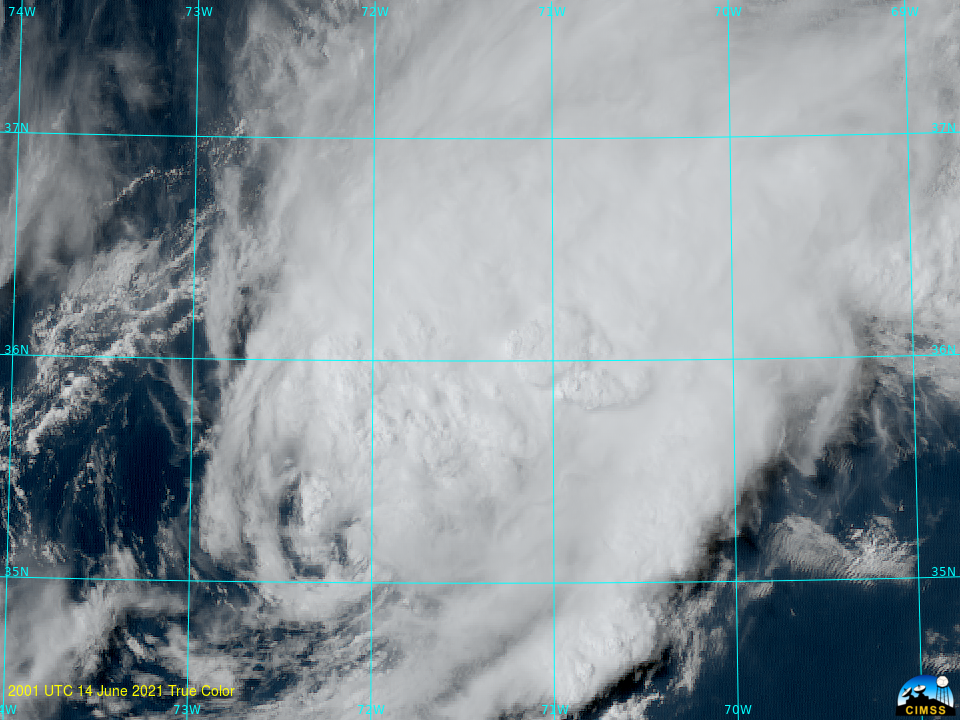


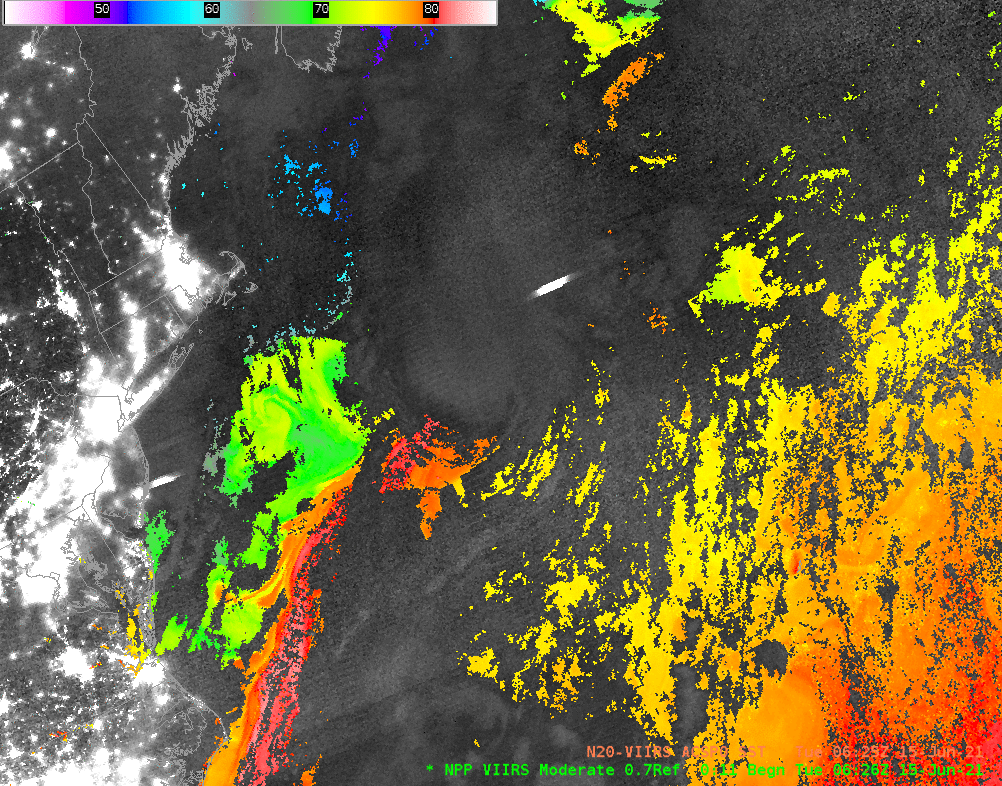

![GOES-16 "Red Visible (0.64 µm, top left), Shortwave Infrared (3.9 µm, top right), Fire Power (bottom left) and Fire Temperature (bottom right) [click to play animation | MP4]](https://cimss.ssec.wisc.edu/satellite-blog/images/2021/06/il_fire_4p-20210614_133616.png)
![Shortwave Infrared (3.9 µm) images from GOES-17 (left) and GOES-16 (right) [click to play animation | MP4]](https://cimss.ssec.wisc.edu/satellite-blog/images/2021/06/G17_G16_SWIR_IL_FIRE_14JUN2021_B77_2021165_145032_0002PANELS_FRAME0000036.GIF)
![GOES-16 Near-Infrared "Vegetation" (0.86 µm) image, with plots of pilot reports and airport ceilings and visibility [click to enlarge]](https://cimss.ssec.wisc.edu/satellite-blog/images/2021/06/il_fire_nir-20210614_170116.png)
![GOES-16 Near-Infrared "Vegetation" (0.86 µm) images [click to play animation | MP4]](https://cimss.ssec.wisc.edu/satellite-blog/images/2021/06/GOES-16_ABI_RadC_C03_2021165_151616Z.png)
![GOES-16 "Red" Visible (0.64 µm) and Near-Infrared "Vegetation" (0.86 µm) images at 1516 UTC (credit: Tim Schmit, NOAA/NESDIS) [click to enlarge]](https://cimss.ssec.wisc.edu/satellite-blog/images/2021/06/GOES-16_ABI_RadC_C02_C03_2021165_151616Z.gif)
![GOES-16 True Color RGB images [click to play animation | MP4]](https://cimss.ssec.wisc.edu/satellite-blog/images/2021/06/GOES-16_ABI_RadC_true_color_2021165_170116Z.png)
![GOES-16 Day Land Cloud RGB images [click to play animation | MP4]](https://cimss.ssec.wisc.edu/satellite-blog/images/2021/06/il_fire_rgb-20210614_170116.png)
![GOES-16 Day Snow Fog RGB images [click to play animation | MP4]](https://cimss.ssec.wisc.edu/satellite-blog/images/2021/06/GOES-16_ABI_RadC_day_snow_fog_2021165_171616Z.png)
